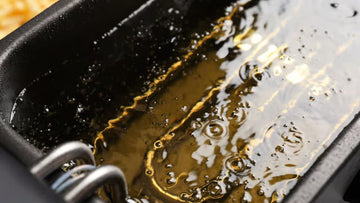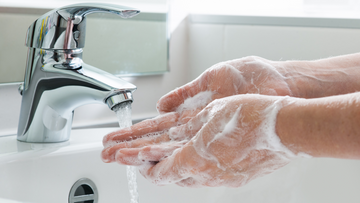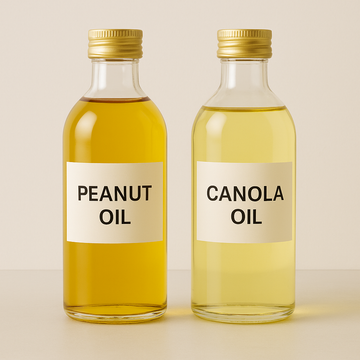If you run a restaurant, one of your biggest recurring costs is frying oil. But what if you’re replacing it far too often—driven by guesswork—and throwing away value that’s still there? In this post, we’ll dig into the science behind oil degradation, reveal why relying solely on color is risky, and share stories from the field (including from Chris Stacy of USOilSolutions). You’ll walk away with a smarter strategy—one that respects TPM, minimizes waste, and keeps your food crisp and profitable.
The Usual Rule of Thumb—and Its Flaws
Walk into nearly any kitchen, and you’ll hear: “When the oil looks dark, we dump it.” Most restaurant owners use the oil’s color as their signal: when it’s visibly dark or cloudy, that’s the cue to replace. It’s intuitive—and hard to argue when things “look bad.” But here’s the problem: color is only a surface indicator—not the full story.
In reality, frying oil degrades from the inside out, at a chemical level. Tiny breakdown products accumulate long before your oil takes on a deep yellow or amber hue. By then, you may already be leaving money—or quality—on the table.
TPM & the Real Science of Oil Degradation

TPM, or Total Polar Materials (sometimes called Total Polar Compounds), is one of the most reliable chemical measures of oil degradation. As oil breaks down (through oxidation, hydrolysis, and polymerization), more polar compounds form—signaling that the oil’s structure is compromised.
In Europe—home to some of the strictest frying oil standards—many countries set hard limits between 24% and 27% TPM as the threshold for discarding oil. Oil that exceeds that threshold is considered degraded and unsuitable for safe, high-quality frying.
By contrast, in the U.S., TPM is rarely regulated—despite its widespread use among smart operators as an internal benchmark. This regulatory gap means many American kitchens rely on subjective cues (color, smell) and schedule-based replacement—rather than chemical reality.
Because of that difference, European fryers often operate closer to the edge of optimal oil usage, throwing out oil only when it’s truly degraded. The result? Less waste, tighter margins, and—some argue—better public health outcomes over time.
We recommend using the Testo TPM Meter linked here
Real Conversations from the Field: Chris Stacy’s Experience
Chris Stacy, founder of USOilSolutions + Co-Partner of Purimax, has been servicing commercial fryers for years. He’s often called into kitchens where the owner or chef insists: “That oil is too dark—replace it now.”
Chris, however, has seen a different story under the microscope. Many of those “dark” oils still tested with acceptable TPM levels, meaning they weren’t chemically spent—even if they looked aged. But despite the data, he would sometimes be forced to drain and replace the oil, simply because that’s what the kitchen leadership expected.
These tensions—between visual judgment and chemical measurement—highlight a core problem in restaurant oil management. Without objective metrics like TPM, decisions often lean overly conservative (wasting oil) or overly risky (serving on degraded oil).
Chris’s experience is not unique: kitchens are full of these “optical bias” moments. The goal is to shift the conversation from when does it look bad? to when does it exceed safe degradation limits?
How Often Should You Really Replace Frying Oil?
There’s no one-size-fits-all answer—but here’s a grounded framework built on science, operational data, and real-world kitchens.

1. Use TPM, not just color.
Test your oil regularly (daily or every shift) using a TPM meter or testing strips. Once you approach the 24–27% threshold (or your internally defined limit), plan for replacement.
2. Don’t replace too early—extend safely.
Many kitchens swap oil every 3–7 days as a rule of thumb. But with effective filtration, impurity removal, and additive technologies, you can often push that to 2–3 weeks—without sacrificing safety or quality.
3. Monitor “active stressors.”
Some things degrade oil faster:
-
Breaded, battered, or heavily seasoned foods (they shed particles)
-
High temperatures or spikes above safe frying limits
-
Poor filtration or neglect of debris removal
-
Frequent cooking cycles without rest and oxidation exposure
4. Partial refresh can help.
Some kitchens “top off” or partially refresh their oil with fresh stock. Diluting the spent oil lowers TPM and delays full replacement.
Our Solution: Extending Oil Life with a Proprietary Blend
At USOilSolutions, we saw the mismatch: kitchens tossing oil based on what looks bad, rather than what fails chemically. So we set out to create a better path.
We developed a natural proprietary blend that, when dosed daily, targets those microscopic impurities—helping you purge the breakdown compounds before they overwhelm the oil. The result? Weeks of extra life on your frying oil, without compromising food quality or safety.
Unlike filters, machines, or complex systems, our blend works silently in the background. The testing we’ve conducted shows real extension of oil life—without pushing past safe TPM limits.
When used alongside disciplined TPM testing and filtration, this approach helps you maximize ROI from your oil, reduce waste, and maintain consistency in every fry.

Key Takeaways for Restaurant Owners
-
Stop using oil color alone as your signal—look deeper with TPM testing.
-
In Europe, strict TPM limits (24–27%) guide disposal; in the U.S., that discipline is mostly voluntary.
-
Real-world experience (like Chris Stacy’s) shows many “dark” oils still have acceptable TPM—but are often replaced out of habit.
-
Depending on your menu and volume, many kitchens change oil every 3–7 days—but with smart tools, that interval can be safely extended.
-
A properly designed additive or filtration system (like our blend) can extract degrading compounds, giving you weeks more life without risking over-degradation.




